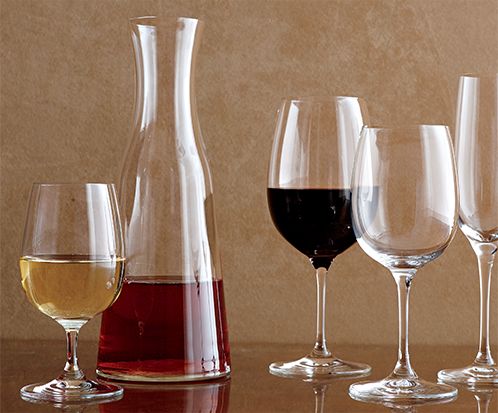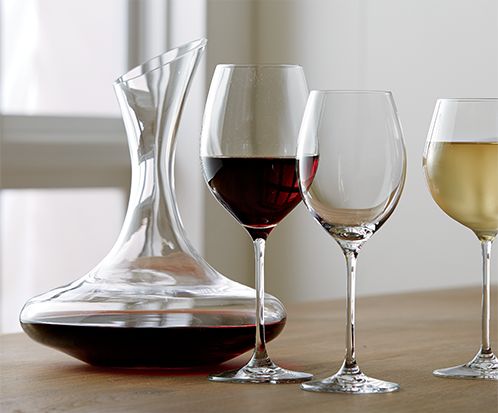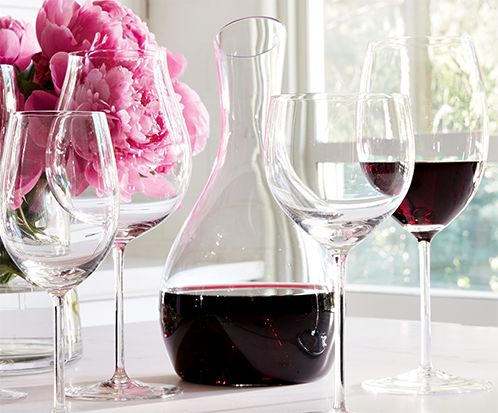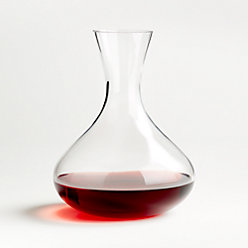The Benefits of Decanting
For true oenophiles (wine connoisseurs), there’s a science to maximizing each bottle once the cork has been removed. Some have elaborate decanter designs with tons of twists and turns, to separate the sediment (grape pulp) from the liquid and encourage the wine to be exposed to as much air as possible. This process is called “oxidation”: when air comes into contact with the wine, releasing aromas that improve the flavor of the wine.
Luckily, simple decanting devices have been proven to work just as well, and a few easy steps can take an inexpensive table variety blend from average to exceptional. Younger bottles of both red and white wine (that haven’t aged more than ten years) can be poured into a basic decanter—a clear glass bottle with a skinnier neck and wider base—just an hour or so before serving. Older bottles (10-15 years or more) usually have settled and require a few additional steps.


How to Decant Wine
Remove the sediment from an older bottle of wine by letting the wine sit upright in the bottle (untouched, unopened) for 24 hours before opening the bottle. This allows the sediment to settle to the bottom of the bottle.
Slowly pour the wine into a decanter, slowing way down when you get to the bottom third of the bottle. As soon as you notice any bit of sediment coming out of the bottle, stop pouring.
Wait to serve the wine for about a half hour after decanting, to get the alcohol at its peak. Holding the decanter by it’s neck, pour 1/3 to 1/2 of the entire capacity of the glass. Swirl the liquid around and observe the way it moves and sticks to the sides of the glass. The denser and richer the wine, the longer it will linger.
Press your nose into the glass, creating a type of seal. Breathe deeply. Notice the “notes” of the wine—do you smell soil? fruit? leather? The smell of the wine is a great indication of its taste.
Take a small sip and hold it on your tongue, breathing in and out with your mouth slightly open. Swallow slowly, and notice how that changed the taste. Try this after each bite of a different food group as well, as food pairings bring out different elements in each type of wine.


Each person has their own ways of decanting wine, so feel free to experiment a bit to see what works best for the types you are drawn to. Old World varieties (from Europe) are very different from New World wines (everywhere else), which tend to be more straight-forward, slightly sweeter and easy to drink. Eventually, you’ll feel comfortable purchasing the kinds you enjoy the most, decanting the bottle of wine in your favorite vessel and serving and enjoying it with friends and family.










